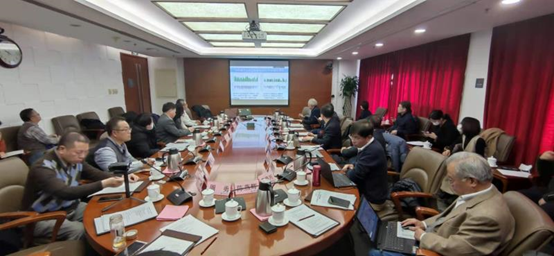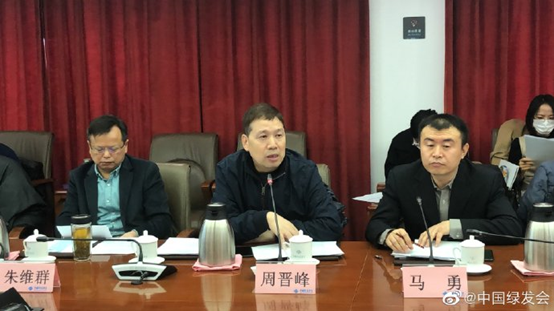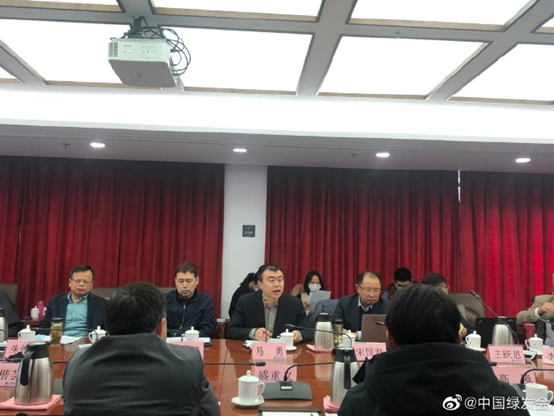After three years, China Biodiversity Conservation and Green Development Foundation (CBCGDF) once again organized relevant experts and business representatives in the field of air pollution control to meet in Beijing.
2020 is the final year of winning the "Beat the Air Pollution" three-year action plan, but the situation in China's air pollution prevention and control battle is still grim. In this context, on November 24, invited by the CBCGDF International Environmental Special Fund, relevant experts and business representatives in the field of air pollution control once again gathered in Beijing, to participate in the symposium on precise control of air pollution (second time) to discuss the precise and effective control of smog.
“The purpose of this meeting is to find out the shortcomings of precise air pollution control, face the current controversies and differences in the field of smog control, and make the air pollution control of the ‘14th Five-Year Plan’ more systematic and effective.” Zhou Jinfeng, Secretary-General of CBCGDF opened the meeting in a clear way.
Atmospheric governance still has room for advancement
In Zhou Jinfeng's view, despite frequent measures to beat the air pollution in recent years, air pollution has not been completely controlled, and there are still questions about the cause of heavy pollution.
"There is still room for advancement in air pollution control. On the one hand, there are frequent treatment measures in various regions, especially in the autumn and winter in North China. In order to reduce the frequent occurrence of heavy pollution weather, a large area of shutdown and production is still maintained, which has improved air quality; On the other hand, haze weather is still frequent, and the severe situation facing environmental pollution and ecological protection has not fundamentally changed, which has also caused a great impact on the sustainable development of our country's social economy. "Zhou Jinfeng said.
Zhou Jinfeng said that the current air pollution control has reached a bottleneck period. The more this time comes, the more serious it is to reflect and find the key to solving the problem.
“Since the smog erupted in 2013, the central and local governments have attached great importance to atmospheric governance. After eight years of ultra-low emissions, coal-to-electricity, coal-to-gas and other measures, we have made progress in this area, but the magnitude is far lower than expected. Especially at the beginning of this year, under the COVID-19 epidemic, most companies shut down, but the smog is still serious.” He Ping, chief expert of the CBCGDF International Environmental Special Fund, took the lead to express his views.
"The measures currently adopted do not address the real cause of the smog. This not only caused the long-term treatment of the smog problem, but also brought huge losses to the economy. I hope everyone can reach a consensus on the causes of smog as soon as possible, promote more effective governance, and prevent the economic gap between North and South from further widening. " He Ping said.
“To solve the smog problem, we must implement strict prevention at the source, strict control of the process, and strict control at the end. We are now dealing with smog, which belongs to the terminal. But if it disappears from the source, naturally there is no need to worry about the terminal.” Although Pan Jiahua, a researcher at the Institute of Urban Development and Environment of the Chinese Academy of Social Sciences, did not come to the scene, he gave his own suggestions online. "We have to walk on two legs. We must not only reflect on the improvement in the end governance, but also reflect on and seek the root causes of smog and achieve reasonable control."
Ultra-low emission indicators are not perfect
Some experts suggested that the current ultra-low emission targets are flawed. They believe that there are five main air pollutants, but the current ultra-low emissions only control two and a half, namely SO2, NOx and filterable particulate matter; the other two and a half are not controlled, including ammonia and volatile organic compounds ( Namely VOC) and condensable particulate matter.
VOC is mainly a precursor of ozone. Regarding the governance of VOC, the community has reached a consensus and started to focus on control, but the effect has not fully emerged.
"Some experts have measured that the ammonia content in the exhausted flue gas is not high, because ammonia emissions occur in the entire process of desulfurization, denitrification and dust removal, and the escape of ammonia in the flue gas is only a small part." He Ping said.
“According to the test results of 17 ultra-low emission units in Beijing and Shanghai, the average CPM is 13.93mg/m3. The current ultra-low emission particulate matter standard is 10mg/m3. It is assumed that the monitored ultra-low emission unit/boiler particulate matter emission average is 5mg/m3, which meets and exceeds the ultra-low standard, but the actual emission is 18.93mg/m3, which is 278% higher than the detected value.” He Ping said that CPM is missing from the ultra-low emission indicator. CPM is an aerosol below PM1.0, which is one of the reasons for the formation of haze.
Promoting in-depth tackling through multiple channels
In addition to the indicators, the participating experts also gave specific suggestions in terms of reducing the side effects of wet desulfurization, reducing water vapor generation, and increasing the intensity of publicity and education.
Luo Jian, Dean of Tianjin Binhuan Chemical Engineering and Technology Research Institute, gave his own point of view from the education aspect: “It is recommended that the country should work hard on education, add more knowledge about pollution, and let children develop good habits of energy conservation and environmental protection. Slowly changing the lifestyle to reduce pollution will have better results in a few years."





Original Chinese article:
http://www.sanlihe.org/BuildingMaterials/news/index.html?ID=31646&share=1
By / Maggie
https://www.paypal.me/CBCGDFChina
http://www.cbcgdf.org/English/ConfirmDonaTion/0.html


(Please indicate "I read CBCGDF" in the payment notes, thank you!)
